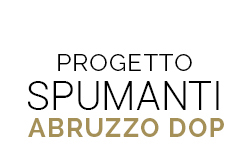
I-UBA-RA PA 18
VARIETY: PASSERINA, White, Clone UBA-RA PA 18
Compiler: University of Bari and Regional Agricultural Development Agency of Abruzzo
Registered in the national grape variety registry
Official Bulletin no. 19 of 24 January 2003.
Origin of clone: aAbruzzo winegrowing area, Pratola Peligna (province of L'Aquila), identified in 1989.

| FIELD OF COMPARISON |
||
|
Location (reference vineyards) |
Casacanditella area Vittorito area |
province of Chieti province of L'Aquila |
| Vine training method | Espalier | Trained as bilateral guyot |
| Planting density (wines/ha) | 2.666 | |
| Observation period | 1998 - 2003 and later | |
| DISTINCTIVE FEATURES WITH RESPECT TO THE AVERAGE | |
|
Cluster: : smaller than average, conical, winged, more scraggly than average, short peduncle.
|
|
| Grape: medium-large, round, yellow-green color, slightly speckled | |
| Vigor: average for the variety |
Fertility: below average |
|
Yield: medium-low, especially in the first years of production |
|
Informations
A very old white grape variety originating in the Adriatic zone of central Italy.
For decades it was confused with other grape varieties, often associated with Bombino Bianco and Trebbiano Toscano. It certainly belongs to the large family of Trebbiano grape varieties. It coincides with Pagadebito Gentile of Romagna and may be a genetically mutated form of Biancame. It has an ample literature and numerous references by well known 19th and 20th century ampelographers, including Acerbi, Molon, Viala, Vermorel and Di Rovasenda. It is currently grown in Marche, especially in the province of Ascoli Piceno, in Abruzzo, and small amounts in Emilia Romagna and Lazio, where it is concentrated almost exclusively in the province of Frosinone. For decades starting in the 1960s it risked abandonment, being largely replaced with Trebbiano Toscano, which is more vigorous and productive but of inferior quality. Passerina produces superior quality wines which are also suitable for making raisin wines.
Its name probably derives from the fact that sparrows (genus Passer) are attracted by the grapes and often peck at them. There are many names for this grape variety: Uva Passera, Trebbiano di Teramo, Campolese, Caccione, Uva d'Oro, Uva Fermana, Cacciadebiti, Pagadebiti (these last two names mean "ward off debts" and "pay debts", respectively, suggesting that in the past it was considered to be productive and a sure source of income). Passerina vineyards in Abruzzo cover some 120 hectares, especially in the inland hills.
Ampelographic characteristics: medium, pentagonal, five-lobed leaf. Medium-large grape cluster, pyramidal or conical, moderately compact to almost scraggly, at times winged. The grapes are gold-yellow in color with a thick, pruinose, tough skin. It normally requires fairly long pruning. It ripens towards the end of September and is consistently productive and vigorous. It is a very versatile variety that adapts to various training schemes.
The salient characteristic of this grape variety is the good ability to accumulate sugar, which is not accompanied by a fully corresponding decrease in acidity at harvest time. It is thus very often characterized by a good acidity level. Certain polyphenols found in this grape variety have significant health benefits. These include hydroxytyrosol, quercetin glucuronide and glutathionyl caftaric acid. Some ten years ago, winemakers began using Passerina grapes to make a varietal. It is certainly a highly versatile variety.
Its good level of acidity allows it to be used to produce sparkling wines, vin santo, raisin wine and also vino cotto. It generally makes a straw yellow wine with greenish nuances. It typically has notes of tropical fruits, citrus and honey as well as a grassy component and a hint of spice. In the mouth one notes its acidity and generally full flavor and a typical somewhat bitter finish. When vinified as vin santo, it exhibits characteristic notes of dried fruit, zabaione, spices, crème caramel, and vanilla and is well suited to aging, at least in quality versions. After being a significant component in various IGT wines and blended into Trebbiano d'Abruzzo DOC and Controguerra DOC, with the attribution of "Abruzzo Passerina DOC" in 2010, a number of winemakers have begun producing this new wine.
| PHENOLOGICAL PHASE |
STAGE |
| Budding |
17/04 Medium-late
|
| FLowering |
07/06 Medium |
| Veraison |
23/08 Medium-late |
| Ripening |
02/10 Medium-late |
| SUSCEPTIBILITY TO FUNGAL DISEASES (%)
|
CLONE |
| Botrytis |
10% Very Low |
| Uncinula necator |
30% Medium Low |
| PRODUCTIVE
CHARACTERISTICS |
CLONE |
| real fertility |
1,20 |
| Yield per trunk (Kg) |
4,69 |
| Number of clusters/trunk |
20,4 |
| Average cluster weight (g) |
230 |
| Average grape weight (g) |
2,60 |
| Dormant pruning weight (g/trunk) |
1150 |
| Ravaz Index
|
4,08
|
| WINE CHEMISTRY
|
CLONE |
| Sugar (° Brix)
|
21,50 |
| pH |
3,26 |
| Total Acidity (g/l) |
6,82 |
| Tartaric Acid (g/l) |
5,09 |
| Malic Acid (g/l) |
1,94 |
ORGANOLEPTIC DESCRIPTION
The good but not excessive productivity of this clone has allowed it to manifest its good enological characteristics, which are better than the standard for the local area. Passerina wines are straw yellow in color, at times with slightly amber highlights, and characterized by a good extract and polyphenols. The sensory assessment reveals an interesting and rather complex bouquet with pronounced floral, fruity (tropical fruits), spicy and herbaceous aromas. To the palate these wines are well structured, enjoyable, harmonious, persistent with a slight bitterness.
SENSORY ASSESSMENT

